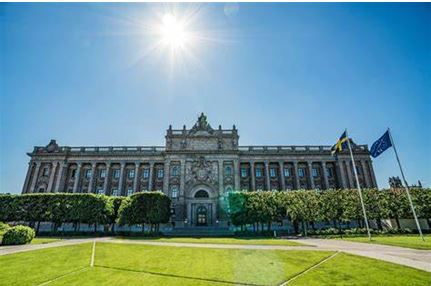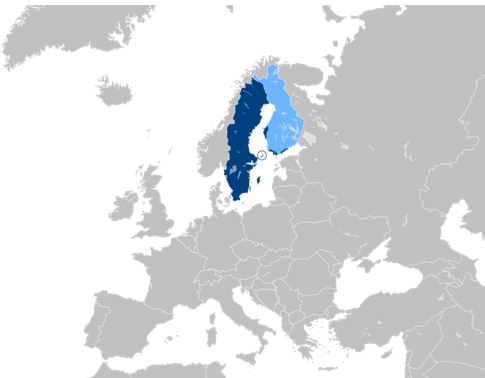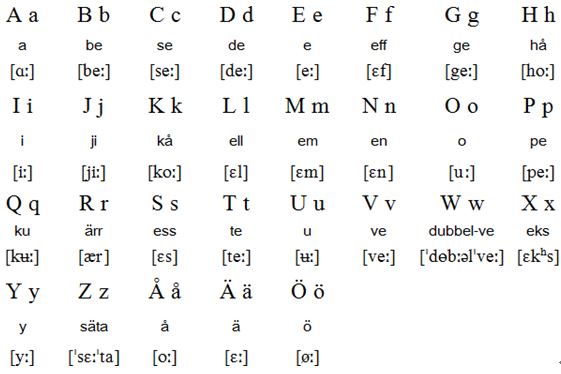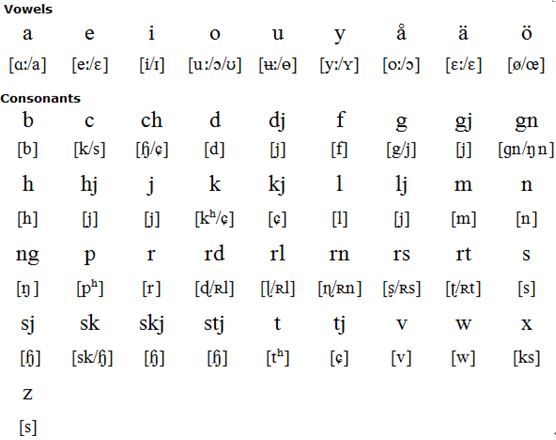Swedish translation

Is the Swedish market one of your target audiences? Our translation agency assists you to establish successful business with Swedish speakers through our top quality Swedish translations. Do you have your eye on major business opportunities with Swedish corporations? We are ready to assist you with professional Swedish translation services that are guaranteed fast and reliable.
Every one of our Swedish linguists are translation professionals with an average of 5-10 years of experience offering professional translation services.
We also offer Swedish to English translations of all your business-related materials, such as: contracts, websites, employee manuals, etc.

Major Swedish-speaking areas
About Swedish
Swedish is a North Germanic language spoken by about 10 million people in Sweden (Sverige). In 2007 there were 290,000 native speakers of Swedish in Finland, and 2.4 million second-language speakers. In 2010 there were an estimated 300,000 Swedish speakers in countries other than Sweden or Finland. Many live in the USA, UK, Spain and Germany, and also in other Scandinavian countries, France, Switerland, Belgium, the Netherlands, Canada and Australia.
Swedish is closely related to Norwegian and Danish, and is mutually intelligible with them to a large extent, particularly in its written form.
Finland was ruled by Sweden from the 12th century until 1809. During that period, Swedish was the main language of government and education there. Today Finnish and Swedish have equal status as official languages in Finland.
There used to be Swedish-speaking communities in Estonia (Estland). About a thousand of those Swedes migrated to southern Ukraine after Estonia became part of the Russian Empire in the 18th century. They set up a village there known as Gammölsvänskbi (Old Swedish Village), which is now part of Zmiivka (Зміївка). Only a few elderly residents still speak Swedish there. During World War II other Swedish-speakers fled from Estonia to Sweden. Only a few people in Estonia still speak Swedish today.
Between 800 and 1100 AD, a dialect of Old East Norse known as Runic Swedish was spoken in Sweden. It was written with the Runic alphabet. It differed only slightly from the Old East Norse dialect of Denmark, or Runic Danish. The two languages began to diverge during the 12th century.
Swedish first appeared in the Latin alphabet in 1225 in the Westrogothic law (Äldre Västgötalagen), the code of law used in the province of West Gothland (Västergötland). The language of this text is known as Early Old Swedish klassisk fornsvenska or äldre fornsvenska), which was used until about 1375. It was grammatically much more complex than modern Swedish.
Between 1375 and 1526 the language of Sweden was known as Late Old Swedish (yngre fornsvenska). It had undergone much grammatical simplification and a vowel shift, and by the 16th century it had more in common with modern Swedish. During this time Swedish borrowed many words from Latin, Low German and Dutch.
The translation of the Bible into Swedish in 1526 is seen as marking the beginning of modern Swedish. It helped to establish a consistent orthography for Swedish, although the spelling used in the translation was not completely consistent. For example, the letters ä and ö were used in place of æ and ø, and å replaced o in many words.
Modern Swedish spelling rules were created by the author Carl Gustaf af Leopold, who was commissioned to do so by the Swedish Academy (Svenska Akademien). His proposal was publish in 1801, and finally adopted by the Academy in 1874. The spelling was reformed in 1906, and that reform was only fully supported by the Swedish Academy in 1950.
Swedish alphabet (Svenska alfabetet)

Note
W and Z are used in loanwords and proper names.
Swedish pronunciation (Svenska uttal)

Notes
• c = [s] before e, i or y, [k] elsewhere
• ch = is pronounced [k] in the word och (and), or not pronounced at all
• g = [j] before e, i, y, ä or ö, [g] elsewhere
• gn = [gn] at the beginning of words, [ŋn] elsewhere
• k = [ɕ] before e, i, y, ä or ö, [kʰ] elsewhere
• sk = [ɧ] before e, i, y, ä or ö, [sk] elsewhere
• rg = [rg, ʀg] before a, o, u, å, [rj, ʀj] elsewhere
• lg = [lg] before a, o, u, å, [lj] elsewhere
• r, rd, rg, rl, rn, rs and rt: the pronunciation on the left is used in northern and mid-Sweden while the pronunciation on the right is used in southern Sweden.
• The pronunciation of sj/sch/sk/skj/stj (known as "the sje-sound") varies considerably throughout Sweden. In southern Swedern it is [xʷ], but in the north of Sweden it is [ʂ] (and it thus falls together with rs in these areas). The pronunciation of tj/k/kj (known as "the tje-sound") is generally [ɕ], but some speakers who have [xʷ] for the sje-sound have [ʃ] for the tje-sound. In the pronunciation of native Swedish speakers from Finland the sje-sound is [ʃ] while tje-sound is [tʃ].
• Two other letters are used: é [ẽ:] and ü [ʏ].

Did You Know?
English has borrowed a few words from Swedish. Among them are the following:
English---from Swedish
moped---mo (motor) + ped (pedaller) ‘pedal cycle with engine and pedals’
ombudsman---ombudsman, literally ‘commission man’ (in reference to the office which hears and investigates complaints by individuals against abuses of the state)
smorgasbord---smorgasbord ‘open sandwich table’, literally ‘butter-goose table,’ from smorgas, which is said to mean ‘bread and butter’, but is compounded from smor ‘butter’ and gas, literally ‘goose’ which is said to have a secondary meaning of ‘a clump (of butter).’ The final element is bord ‘table’.
tungsten---tungsten ‘calcium tungstate’, coined by its discoverer, Swedish chemist Karl Wilhelm Scheele from tung ‘heavy’ + sten ‘stone’.
Just contact us to get more information and a no-obligation quote. Our project managers can be reached via telephone, email, or the form. We look forward to serving you.
For more information about Swedish translation,
call us or add wechat today at +86-13616034782
or send us an email to:info@target-trans.com